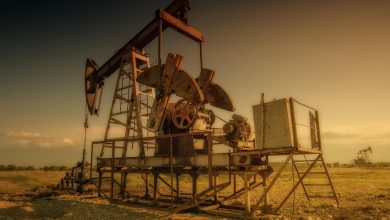Bio Fertilizer and Its Effects on Human Health

While fertilizers cause relatively little damage to wildlife compared to damage caused by pesticides, in some cases they are dangerous to human health. Some of these dangers are as follows:
High nitrate concentrations in drinking water can cause clinical methaemoglobinemia, commonly referred to as blue baby syndrome.
• Causes dust exposure, which is the main occupational health problem in fertilizer production,
• It causes a number of serious diseases such as stomach, bladder and esophageal cancer,
Occupational health and safety (OHS) must be properly managed, the farmer’s OHS system helps to effectively control OHS risks, prevent work-related diseases or injuries, and ensure compliance with regulations and standards. Practitioners, researchers and other stakeholders, particularly suited to the new economic and professional nature of the farmer business, are interested in assessing and managing existing OHS risks. These goals are as follows:
• Determining effective practices in OHS risk management,
• Using a simple framework of good practice,
Products or material safety data sheets (MSDS) serve two purposes as they inform people involved in the use of chemicals about the hazards involved and also serve as the basis for risk assessments. Safety data sheets should be provided at all stages of the distribution chain and some countries have required them to be used within the scope of legislation. In addition to normal production characteristics, MSDS should generally provide health hazard and eco-toxicological information that is difficult to obtain and interpret.
Dangers to Farmers
Farmers using bio fertilizers can be exposed to many hazards, some of which are:
Temperature
Heat-related illness can be fatal, and every year thousands of workers get sick from exposure to heat, and some even die from it. But these diseases and deaths can be prevented. Workers exposed to hot and humid conditions are at risk of high temperature sickness, especially if they are doing heavy work or using bulky protective clothing and equipment. New employees may be at greater risk than others if they have not developed tolerance to hot conditions. Employers should take steps to help workers adjust.
Heat-related illnesses can be easily prevented, although potentially fatal. When working in hot conditions, it should be given a break and shade should be created as much as possible, even if the person is not thirsty, water should be consumed every 15 minutes. Hats and light-colored clothing should be used, among other measures. In addition to these, it is important to know the location as it is necessary to get help in emergency situations and help should be sought in case of any sign of illness.
Musculoskeletal injuries
Workers working for crop production in agricultural activities typically use repetitive movements in awkward positions, which can result in musculoskeletal injuries. Ergonomic risk factors are found in jobs that require repetitive, strenuous or prolonged exercise of the hands, causing squeezing heavy objects, lifting heavy, pushing, pulling, moving, and prolonged awkward postures.
Some methods for reducing musculoskeletal injuries include appropriate tools, padding to reduce vibration, and less activity with high repetitions. However, deaths and injuries from falls remain a major hazard for farm workers.
Vehicle hazards
Injuries from vehicle accidents are serious and debilitating for farm activities. In addition, the use of dangerous equipment and machinery is among the dangers. Farm workers routinely use knives, hoes, and other cutting tools. They have to work on stairs or use different machines. However, these simple tools can be dangerous and have the potential to cause serious injury if improperly used or not properly maintained. For this, there are precautions to be taken in the use of dangerous equipment and machinery. These measures are as follows:
• All tools must be kept in good condition and used according to the manufacturer’s instructions.
• Power tools must be properly grounded or double insulated and all guards or shields in place.
• Farm workers should wear appropriate personal protective equipment and ensure that the clothing has no strings or loose ends that could get caught in the machinery. Long hair should be tied back to avoid tangles.
• In addition, shops should be well lit, and open walkways to prevent slips, tripping and falls.
Grain bins and silos
Although sometimes overlooked, the security issues surrounding grain bins and silos on farms pose many dangers. When working with grain bins and silos, farm workers are exposed to choking or swallowing hazards, as well as grain dust and explosions. Drowning is a leading cause of death in grain storage bins. Choking can occur when a worker is buried (swallowed) by the grain while walking on the moving grain or attempts to clear the accumulated grain in a garbage can. Moving grain acts like a swamp and can bury a worker in seconds. Bridged grain and vertically stored grain piles can also collapse unexpectedly if a worker stands on or near them. Unsanitary conditions
Lack of drinking water, sanitation facilities, or hand washing facilities can lead to many health effects. Farm workers may experience urinary tract infections due to urinary retention caused by insufficient drinking water intake and insufficient toilets. They may also experience heat stroke and heat exhaustion due to agricultural chemical poisoning caused by lack of hand washing facilities, infectious and other infectious diseases caused by microbial and parasitic exposures.
Difficulty breathing
Respiratory hazards in barns, manure pits, machinery and silos range from acute to chronic air pollutants. The most common respiratory hazards for farm workers are bio-aerosols such as organic dusts, microorganisms and endotoxins, chemical toxic substances from the breakdown of grain and animal waste. Inorganic dust from silicates is common in harvesting and tillage, but less important. Respiratory protection. Control of aerosols may include the containment and ventilation of tractors, the application of moisture to friable material, and respirators.
Noise and sound
Thousands of workers each year suffer from preventable hearing loss due to high workplace noise levels. Studies have shown that those living and working on farms have significantly higher rates of hearing loss than the general population. In fact, farming is among the professions with the highest risk of hearing loss.
Tractors, forage harvesters, silage blowers, chainsaws, skid steer loaders, grain dryers, squeaking pigs and guns are some of the most typical noise sources on the farm. Studies show that prolonged exposure to these high sound levels causes noise-induced hearing loss in farm workers of all ages, including teenagers. Hearing loss is not as dramatic or sudden as an injury from the overturning of a tractor or the machine being entangled, but it is permanent. Employers can provide noise reduction in a number of ways, usually related to the maintenance of equipment, and these are:
• Worn, loose or unstable machine parts can increase decibel levels during operation. Regular lubrication and replacement of parts (bearings, silencers, silencers, etc.) reduces friction and lowers noise levels.
• Larger engines that can be run at lower speeds reduce noise levels and even save fuel.
• Vibration isolation pads can be installed under the legs of noisy equipment to reduce noise caused by equipment vibrating on a cement floor.
• New chainsaws and leaf blowers have flexible connections to also reduce vibration related noise.
• Tractors and skid steers can be purchased with sound attenuating cabs, tightly fitted cab doors and windows to reduce how much outside noise is reaching the operator.
• Acoustic materials can be placed on walls and ceilings to mute the sound.
Additionally, employers can provide workers with personal protective equipment, but should be trained to use this equipment correctly. The best health, safety and well-being for farmers cannot be achieved at once. Effective systems are based on the principle of plan – implement – control and take action. In terms of farmer safety for companies, this requires developing a policy aimed at what to achieve, then developing a plan for how and when this will be done, including the necessary regulations. Then comes the stage of doing when the plans are implemented, and then it is checked whether the planned thing is done and whether it is effective in controlling risks. Any deficiencies found must be rectified and corrected so that system performance is constantly improved.





